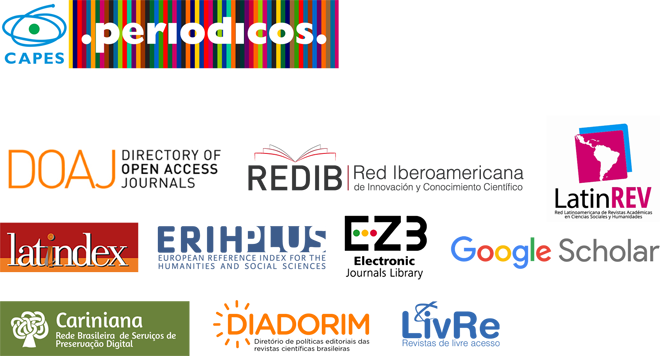God Who Kills, God Who Dies. The King and the Polivalence of Death in Ancient Egypt
DOI:
https://doi.org/10.36025/arj.v9i1.29673Keywords:
Ancient Egypt, Gods-Kings, Death, Polyvalence, PathosformelAbstract
The links between the Egyptian gods Osiris, Horus, and Seth are particularly significant regarding the action of killing and its relationship to the maintenance of cosmic order in Ancient Egypt. On the one hand, Horus –with whom the ruling king identifies himself– exercises his ability to kill, so that order prevails over chaos. On the other hand, chaos is never extinguished and there are times when it prevails as well: Osiris –father of Horus and god with whom every king identifies once passed away– dies violently at the hands of his brother Seth. But this crime has a paradoxical effect, since through his own death Osiris becomes a life-giving force, that is a condition of the cosmic order itself. This work aims to illustrate this versatile aspect of death in relation to the kings and gods of Ancient Egypt.
Downloads
References
ALLEN, James P. The Ancient Egyptian Pyramid Texts. Atlanta: Society of Biblical Literature, 2005.
ALLEN, Thomas G. The Book of the Dead. Or Going Forth by Day. Chicago: The Oriental Institute, 1974.
ASSMANN, Jan. Egipto. Historia de un sentido. Madrid: Abada Editores, 2005 [1996].
BAINES, John. Visual and written culture in ancient Egypt. Oxford: Oxford University Press, 2007.
BURUCÚA, José Emilio. Historia y ambivalencia. Ensayos sobre arte. Buenos Aires: Biblos, 2006.
CABOBIANCO, Marcos. Destruction against Violence. Destructive tactics for representing violence in art. In: Klaus, G., Noorthhoorn, V., Villa, J.,Aguado, A. (eds.). Tale of Two Worlds: Experimental Latin American art in dialogue with the MMK Collection, 1944-1989. Frankfurt am Main: Kerber Verlag, pp. 130-151, 2018.
CAMPAGNO, Marcelo. De los jefes-parientes a los reyes-dioses. Surgimiento y consolidación del Estado en el Antiguo Egipto. Barcelona: Aula Ægyptiaca, 2002.
CAMPAGNO, Marcelo. Egyptian Boundaries in the Tale of Sinuhe. In: Amstutz, H., Dorn, A., Müller, M., Ronsdorf, M.,Ullas, S. (eds.). Fuzzy Boundaries: Festschrift für Antonio Loprieno. Hamburg: Widmaier Verlag, pp. 335-346, 2015.
CAMPAGNO, Marcelo. Lógicas sociales en el Antiguo Egipto. Diez estudios. Buenos Aires: Editorial de la Facultad de Filosofía y Letras de la Universidad de Buenos Aires, 2018.
CAMPAGNO, Marcelo. Surgimiento del Estado en Egipto: Cambios y continuidades en lo ideológico. Buenos Aires: Universidad de Buenos Aires, 1998.
CAMPAGNO, Marcelo. Una lectura de «La contienda entre Horus y Seth». Buenos Aires: Universidad de Buenos Aires /Ediciones del Signo, 2004.
CASHFORD, Jules. El mito de Osiris. Girona: Atalanta, 2010 [2009].
CERVELLÓ AUTUORI, Josep. Egipto y África. Origen de la civilización y la monarquía faraónicas en su contexto africano. Sabadell: Ausa, 1996.
CERVELLÓ AUTUORI, Josep. Listas reales, parentesco y ancestralidad en el Estado egipcio temprano. In: CAMPAGNO, M. (ed.). Estudios sobre parentesco y Estado en el Antiguo Egipto. Buenos Aires: Universidad de Buenos Aires / Ediciones del Signo, pp. 95-120, 2006.
CURRAN, Brian. The Egyptian Renaissance. The Afterlife of Ancient Egypt in Early Modern Italy. Chicago: The University of Chicago Press, 2007.
DIODORO de SICILIA. Biblioteca Histórica. Introducción General. Libros I-II. Edición coordinada por Jesús Lens Tuero: Traducción de Jesús Lens Tuero, Jesús M. García González y Javier Campos Daroca. Madrid: Ediciones Clásicas, 1995.
FRANKFORT, Henri. Reyes y dioses. Estudio de la religión del Oriente Próximo en la Antigüedad en tanto que integración de la sociedad y la naturaleza. Madrid: Alianza, 1998 [1948].
FRANKFORT, Henri. The Dying God. Journal of the Warburg and Courtauld Institutes 21, Nº 3 / 4, pp. 141-151, 1958.
FRANKFORT, Henri; BING, Gertrud. The Archetype in Analytical Psychology and the History of Religion. Journal of the Warburg and Courtauld Institutes 21, Nº 3 / 4, pp. 166-178, 1958.
FRANKFORT, Henri; FRANKFORT H.A.; WILSON, John; JACOBSEN, Thorkild. El pensamiento prefilosófico. I. Egipto y Mesopotamia. México: Fondo de Cultura Económica, 1958 [1946].
GWYN GRIFFITHS, John (ed.). Plutarch. De Iside et Osiride. Cambridge: University of Walles Press, 1970.
GWYN GRIFFITHS, John. The conflict of Horus and Seth. From Egyptian and classical sources. Liverpool: Liverpool University Press, 1960.
KEMP, Barry J. Ancient Egypt. Anatomy of a Civilization. Abingdon: Routledge, 2018.
KOENIG, Yvan. Magie et Magiciens dans l’Égypte Ancienne. Paris : Pygmalion, 1994.
LICHTHEIM, Miriam. Ancient Egyptian Literature, Vol. II. The New Kingdom. Berkley: University of California Press, 2006 [1976].
PARKINSON, Richard B. The Tale of Sinuhe and Other Ancient Egyptian Poems 1940-1640 BC. Oxford World’s Classics. Oxford: Oxford University Press, 1999.
POO, Moo-Chu. Enemies of Civilization: Attitudes toward Foreigners in Ancient Mesopotamia, Egypt and China. Albany: State University of New York Press, 2005.
RITNER, Robert K. The Mechanics of Ancient Egyptian Magical Practice. Chicago: The Oriental Institute, 1993.
SCHULZ, S. & SEIDEL, M. Ägypten: Die Welt der Pharaonen. Köln: Könemann,1997.
SMITH, Mark. Following Osiris. Perspectives on the Osirian Afterlife from Four Millennia, Oxford, Oxford University Press, 2017.
SMITH, Stuart Tyson. Wretched Kush: Ethnic Identities and Boundaries in Egypt's Nubian Empire, London, Routledge, 2003.
TE VELDE, Herman. Seth, God of Confusion. A Study of his Role in Egyptian Mythology and Religion, Probleme der Ägyptologie vol. 6, Leiden, E. J. Brill, 1977.
WARBURG, Aby. Atlas Mnemosyne, Madrid, Akal, 2010 [2003].
WARBURG, Aby. Recuerdos del viaje al territorio de los indios pueblo en Norteamérica, Madrid, Siruela, 2018 [1923].
WENGROW, David. The Intellectual Adventure of Henri Frankfort: A Missing Chapter in the History of Archaeological Thought. American Journal of Archaeology, v. 103, n. 4, pp. 597-613, 1999.
ZANDEE, Jan. Death as an Enemy according to ancient Egyptian conceptions, Leiden, Brill, 1960.
Downloads
Published
How to Cite
Issue
Section
License
Copyright (c) 2022 Marcelo Campagno, Marcos Cabobianco (Autor)

This work is licensed under a Creative Commons Attribution-NonCommercial-ShareAlike 4.0 International License.

This work is licensed under a Attribution-NonCommercial-ShareAlike 4.0 International (CC BY-NC-SA 4.0) License.
Authors retain copyright, while licensing their work under a Attribution-NonCommercial-ShareAlike 4.0 International (CC BY-NC-SA 4.0) License.


 English
English Português (Brasil)
Português (Brasil)
